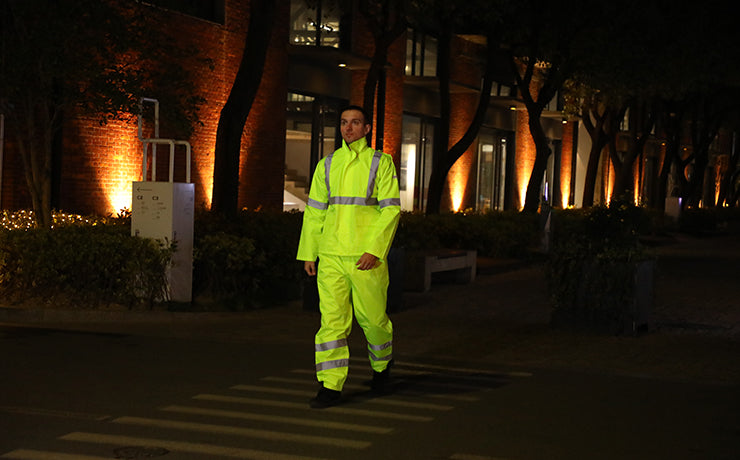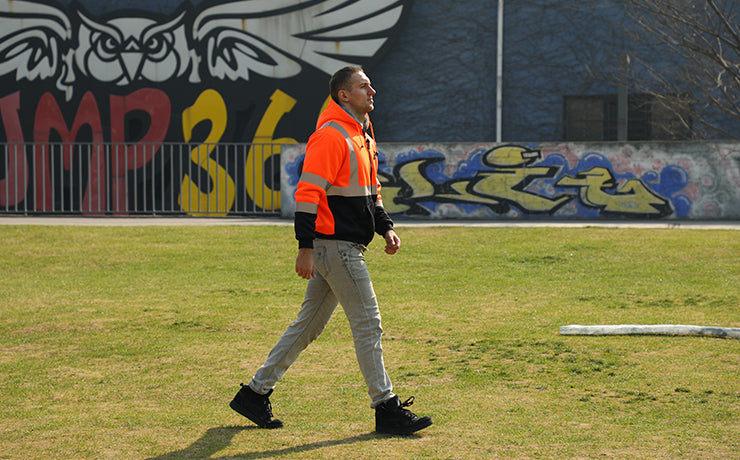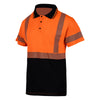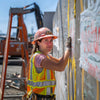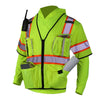Creating a Safety Culture in Construction: Leadership and High Visibility Standards
Imagine stepping onto a construction site where every worker feels secure, knowing that their well-being is a top priority. This not only benefits the workers but also enhances the overall efficiency and safety of the operation.
When employees feel valued and protected, they are more likely to perform their tasks with confidence and attention to safety protocols. This, in turn, minimizes accidents and disruptions, ultimately leading to a more successful and productive workplace.
This concept is what we refer to as fostering a "culture of safety."
Fostering a culture of safety is all about making safety a part of everything in construction. Let's explore what this really means and how we can make it happen.
What is a Safety Culture in Construction?

A safety culture, as stated previously in the paragraph above, refers to the implementation of health and safety principles in every action on the construction industry. This should become a core value in every construction company, so that everyone, from the board of directors to the newest workers, thinks and acts with health and safety in mind.
It's about making sure that looking after each other's safety is just as important as getting the job done. It's not just about following the rules; it's about believing in them.
The Current State of Safety Culture in the Construction Industry
Currently, while safety practices are satisfactory in numerous job sites, there are still large rooms for improvement in many others.
Some job sites excel in adhering to safety protocols. Their workers understand the importance of wearing personal protective equipment (PPEs), able to conduct potential risk assessments, execute preventive measures, and prioritizing safety throughout the process.
Others might have problems in committing to the safety regulations. This elevates the risk of accidents. It is imperative to prioritize the establishment of comprehensive safety standards across all construction sites to ensure a secure working environment for all personnel involved.
The Role of Leadership in Cultivating Safety Culture
Leadership is crucial when it comes to safety. If the people in charge show they care about safety, everyone else will too. Leaders need to do more than just talk about safety; they need to show it in what they do every day.
How Leadership Behaviors and Attitudes Influence Safety Culture?
When leaders are seen wearing their helmets and following safety rules, it sends a message that safety is important. They need to be part of safety meetings and listen to concerns. Their attitude can make a big difference in how everyone else views safety.
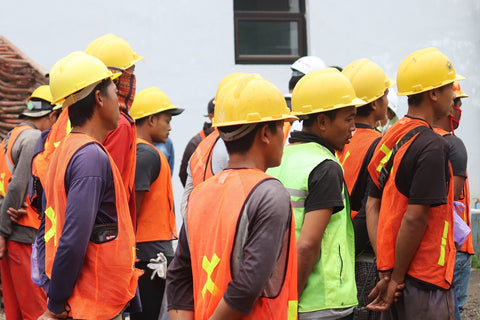
Here are some ways leaders can show they're serious about safety:
-
Leading by example: Always following safety procedures themselves.
-
Open communication: Making it easy for anyone to talk about safety concerns without fear.
-
Visibility on-site: Being present on the construction site, not just in an office.
-
Encouraging safety meetings: Joining and even leading safety meetings to emphasize their importance.
-
Promoting safety training: Making sure there's money and time for training everyone on safety.
How Can We Improve Safety Culture?
Enhancing the safety culture within the construction industry requires a proactive and inclusive approach. Here are five key strategies, detailed through specific actions, to effectively improve safety culture.
1. Regular Safety Training
Ongoing training is crucial. It keeps everyone, from construction workers to safety managers, up-to-date on the latest safety practices and regulations. Here is how you can do it:
-
Conduct diverse safety training sessions: Cover topics like proper PPE usage, safety protocols, and risk assessments regularly.
-
Hands-on training for practical skills: Focus on safe lifting operations and equipment handling.
-
Basic first aid and emergency response: Equip employees with the knowledge to handle emergencies effectively.
-
Update training content: Reflect new safety regulations and insights from recent incidents in training materials.
2. Employee Engagement
Engaging employees in safety discussions and decisions fosters a positive safety culture. When construction workers feel their voices are heard, they're more likely to adhere to safety measures and contribute ideas for improving safety on the job site. This can be facilitated through:
-
Form a safety committee: Include members from various levels within the company to represent a wide range of perspectives.
-
Encourage participation in safety meetings: Motivate employees to share their ideas and concerns on safety matters.
-
Implement a suggestion system: Use boxes or digital platforms for anonymous safety suggestions.
-
Organize safety workshops: Discuss construction safety culture, identify safety risks, and explore preventative measures together.
3. Empowerment to Report Unsafe Conditions
A key component of a strong safety culture is empowering everyone on the construction site to report unsafe conditions without fear of repercussions. This proactive approach helps identify and address hazards before they lead to accidents. Here is how you can do it:
-
Simplify the reporting process: Ensure the procedure for reporting safety issues is straightforward and well-communicated.
-
Positive response training for supervisors: Train leaders to encourage and act on safety reports from team members.
-
Regular reminders on the importance of reporting: Use safety meetings to emphasize the value of reporting unsafe conditions.
-
Anonymous reporting options: Provide channels for employees to report safety concerns anonymously.
4. Recognition for Safety Achievements
Recognizing and rewarding employees for safety achievements can significantly enhance a safety culture.
Whether it's through formal awards or simple acknowledgments in safety meetings, celebrating safety successes encourages a positive health and safety culture. This recognition can take many forms:
-
Rewards program for safety milestones: Recognize efforts towards achieving zero injuries or successful safety plan implementations.
-
Public acknowledgment of safety achievements: Use company platforms to celebrate safety successes.
-
Tangible rewards for safety contributions: Offer incentives like gift cards or extra time off for notable safety achievements.
-
Incorporate safety into evaluations: Reflect safety performance in employee reviews and career progression discussions.
Implementing High Visibility Standards
High visibility standards are crucial safety measures in the construction industry. These standards involve the use of easily noticeable colors and materials to ensure workers are seen on job sites, reducing the risk of accidents.
High visibility is particularly important in areas with heavy machinery and vehicle traffic, where being seen can be the difference between safety and danger.
How High Visibility Can Prevent Accidents and Enhance Safety?
-
Increased Visibility in Low Light: High-visibility clothing makes workers more visible during dawn, dusk, or at night, significantly reducing the likelihood of accidents in low-light conditions.
-
Distinguishing Personnel from the Environment: Brightly colored vests and helmets help distinguish workers from their surroundings, making it easier for machine operators to spot them amidst construction materials and equipment.
-
Promoting a Safety-First Culture: The consistent use of high-visibility gear reinforces the importance of safety on the construction site, contributing to a stronger safety culture where precautions are taken seriously.
Implementing High Visibility Standards on Construction Sites
Implementing high visibility standards on construction sites requires a combination of policy, training, and equipment. Here are practical steps for construction companies to follow:
1. Define Safety Rules for High Visibility
Incorporate high-visibility requirements into the company's safety program. This should detail when and where high-visibility clothing is required, aligning with both occupational safety regulations and the specific hazards of each construction site.
2. Issue High-Visibility Personal Protective Equipment (PPE)
Ensure all workers are provided with high-visibility clothing that meets industry standards. This could include vests, jackets, and helmets, suitable for different weather conditions and job roles.
3. Conduct Safety Inspections
Regular safety inspections should include checks on the use and condition of high-visibility gear. This ensures that all personnel are complying with the visibility standards and that the gear is in good condition to provide the intended protection.
4. Training and Safety Meetings
During safety training sessions and brief safety meetings, emphasize the importance of wearing high-visibility gear. Include instructions on proper use and maintenance, and explain how high visibility contributes to workplace safety.
5. Implement Lighting and Signage
Beyond personal gear, improve site visibility with adequate lighting and clear signage. This is especially important in areas with vehicle traffic, around heavy machinery, and at site entrances and exits.
Choosing High-Visibility Clothing from Fonirra

In line with implementing high visibility standards on construction sites, selecting the right gear is paramount. Fonirra stands out as a professional supplier of high-visibility clothing, offering a wide range of products designed for safety and visibility.
From vests and jackets to shirts and sweatshirts, Fonirra's apparel meets various international safety standards, ensuring construction workers are seen and safe, regardless of the working conditions.
Embracing Fonirra's high-quality, reflective clothing can significantly enhance safety on your construction site, supporting a better safety culture and ensuring compliance with equipment regulations. Visit Fonirra for a comprehensive selection tailored to your safety needs.
Conclusion
To ensure construction sites are safe for everyone, companies must focus on regular safety training, employee engagement, reporting of unsafe conditions, recognizing safety achievements, and continuous improvement.
Adopting high-visibility standards, like those provided by Fonirra, is essential for worker visibility and protection. These collective efforts build a strong safety culture, essential for the industry's success and the safety of its workers.

